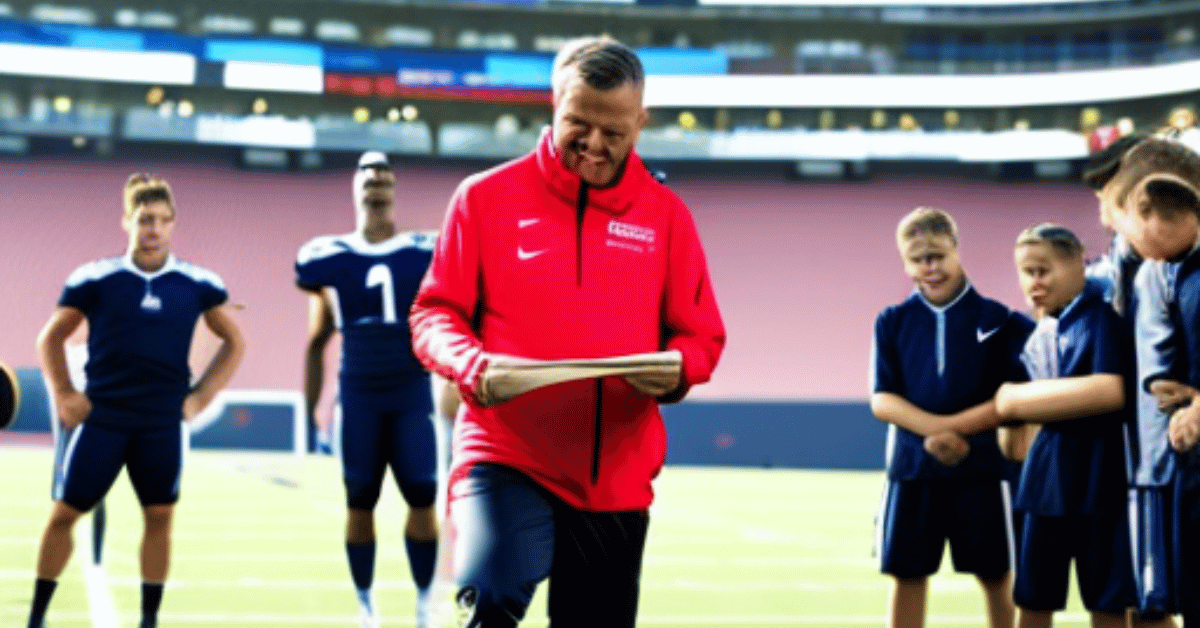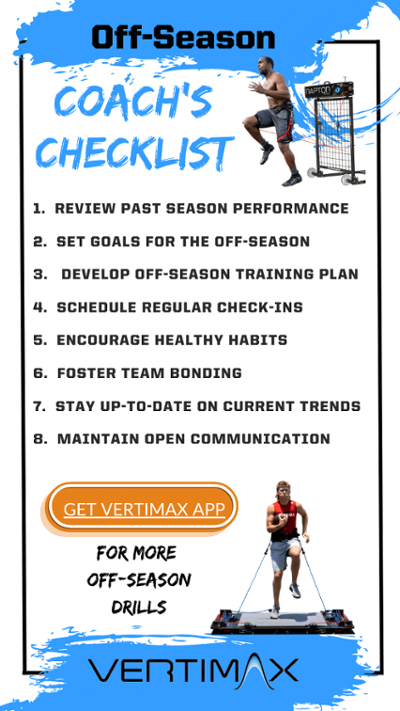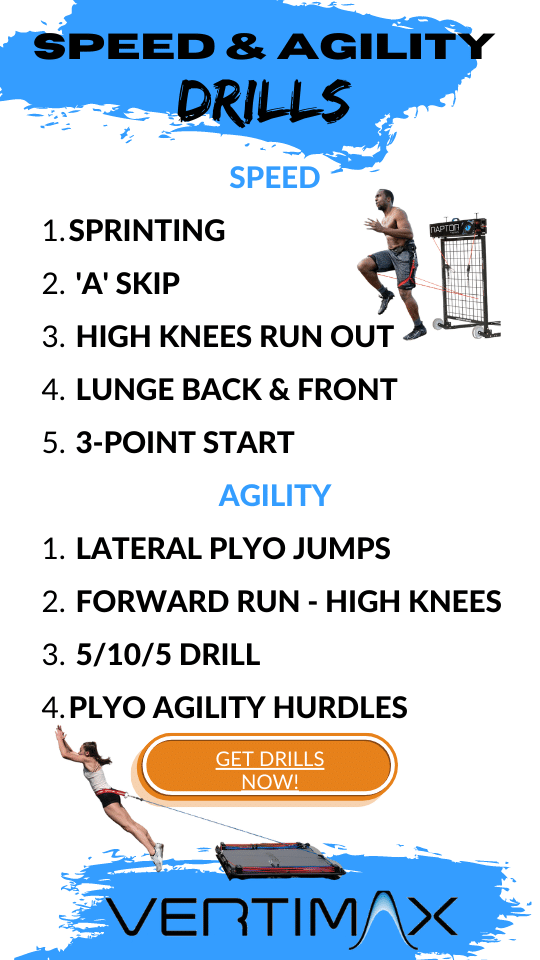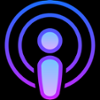All coaches should have a plan during off-season training because a lack of preparation can put your team at a huge disadvantage once the season starts again. However, many athletic coaches may be overwhelmed by attempting to organize team/individual activities at home or other training facilities when they can’t supervise everyone’s training. Developing a system of accountability becomes paramount, not only to help maintain the standard set during the season but to have an accurate assessment of the progress athletes are making while they are training on their own.
There also needs to be careful consideration put into the level of training and amount of rest athletes are getting during this time. Being deliberate about the amount of rest athletes have during the off-season could be an even more costly mistake. Whether you are coaching youth, high school, college, or pro athletes, all will undoubtedly have an assortment of injuries or imbalances that require time off to heal correctly. Failure to do so can lead to nagging injuries that require more serious medical intervention at some point, possibly costing the athlete playing time during the season.
There is also the issue of mental fatigue that athletes face, as constant, year-round training will inevitably lead to the athlete experiencing burnout once the workload increases during the season.
This is where the need to be thoughtful and organized about your off-season goals comes in. Coaches will no doubt have to be more creative in how they ask players to train and decide to interact with them throughout the off-season. With that said, let’s take a look at some of the aspects coaches need to consider when developing a checklist for their off-season goals.
Off-Season Coaching Checklist
1. Review Past Season Performance
2. Set Off-Season Goals
3. Develop An Off-Season Training Plan
Athletes want to know how to get better in their respective sport. It is important to develop a plan for specific skills, equipment, and exercises they should work on to help them improve during the off-season.
There are many opportunities to use different training equipment to improve. One of the best ways to enhance an athletic training program is to use the VertiMax V8 Platforms or VertiMax Raptor resistance training equipment. VertiMax allows for countless game movement patterns while training under resistance. This means athletes train as they play their game to replicate the skills they will need in their sports.
For example, here’s a young football player using the VertiMax V8 Platform to hone his receiving skills by putting resistance on his wrist to enhance catching movements, building up his reaction time and quick twitch muscles.
Here’s another great example in basketball, where the athlete is putting the resistance from the VertiMax V8 on their hips while performing ballhandling drills. This allows the athlete to build strength in their lower body/core for more explosive movements, while also working on their handle under duress.
Regardless of which sport you play, VertiMax has the functionality to help you with sport-specific drills. Check out VertiMax.com for links to workouts for your particular sport.
4. Schedule Regular Check-Ins
5. Encourage Healthy Habits
6. Foster Team Bonding
7. Stay Up-to-Date On Current Trends
8. Maintain Open Communication
Give Your Players Feedback
One of the first things coaches should do once the off-season is underway is to provide player feedback. It is important to the growth of your players. There are different ways to go about this. Some coaches provide detailed documents on a player’s progress, while others choose to meet individually with each player and discuss the path that the athlete is on and what they need to do to improve.
Feedback should also be a two-way street, with the players being encouraged to mention any issues or concerns they have about their development. Many teams use an anonymous questionnaire to allow players to submit their comments, which will give them a little more freedom in voicing honest opinions about their situation.
Whichever method you decide to use to evaluate your player, you should also take this opportunity to outline any program or plan you have developed for them individually, as well as any plans you have for the team.
Steamline Communication
Communicating with your players is the most important component of your off-season plan. Being unclear with your plan or messages can lead to athlete’s training less than they should. It’s also critical to decide where you engage with your players, as sending too many instructions and how you deliver them will almost certainly end in confusion. Whether you are sending a group text or using one of the many apps that provide video instruction for drills, being proactive with team communication will help to build consistency for players to adhere to their training schedule.
How To Establish Strength and Conditioning Routines
The off-season is where professional athletes make most of their strides in terms of their physical and athletic ability, but progress can be harder for youth and high school athletes to get in this area. Not having an available weight room throughout the off-season or an expert strength and conditioning coach can be a limiting factor for a lot of teams and players. VertiMax equipment is mobile and can be used anywhere, inside or outside. They can anchor it to allow for full use in whatever space you have available to train.
Here are some quick examples showcasing the VertiMax’s ability to travel and function in various workout locations.
Train the Right Way During the Off-Season with VertiMax
It goes without saying that establishing a plan for your training your athletes during the off-season is necessary, if not vital, for in-season success. The off-season is where players can not only make huge strides in their physical conditioning and skill development, but teams can make progress on creating a culture of work, discipline, and accountability. A coaching checklist helps to create a routine for athletes to stick to during the off-season and stay on track with their training.
For those coaches looking for a way to motivate and engage their players to get involved with their off-season program, they should look no further than VertiMax. VertiMax allows coaches and players a variety of skill development opportunities for each athlete's specific sport. This provides coaches with more ways to stimulate players and keep them interested in training.
Team training is easy with the VertiMax V8, where up to 5 players can perform different drills on it at the same time. You could also do a circuit training workout for up to 40 players with VertiMax, creating a fun way for players to workout with their teammates.
The VertiMax App provides additional training drills to assist the strength and conditioning coach with sport-specific drills for the off-season. The VertiMax blogs and social media accounts have a wealth of information for athletes to learn how to increase your vertical jump, improve your speed, or boost your agility.
Get in touch with our support team if you have questions about the different ways VertiMax equipment can be used. There are multitudes of drills you can perform. If you’re just not sure how to get started, we’re happy to answer any questions you may have to get you training at an elite level with VertiMax.






.png?width=110&name=Listing%20Image-basketball%20ladder%20drill%20%20(350%20x%20350%20px).png)














